The group of lads in the corner of the grungy Glaswegian bar aren’t your usual restaurant-goers. They’re honking with hilarity, phones clicking like dolphins. Who knows what’s causing the mirth – maybe the Buckfast ice-cream (notorious fortified wine, known locally as “Electric Soup”), or the burger topped with Smith’s bacon crisps, or the Irn-Bru pork. The “Mad Chef” at Bloc specialises in OTT food designed not so much to be savoured as to cause a commotion. Especially online. His Pot Noodle burger might be revolting, but it is a wholly successful piece of attention-grabbing. Love it or loathe it – and there is a startling number for whom the very idea causes a foam of fury – the marriage of food and social media isn’t going away any time soon.
The internet has become increasingly food-obsessed since the early days when a slightly fetishistic subculture known as “foodies” would post pictures of Tayyabs’s legendary lamb chops on hilariously clunky sites such as eGullet. Today, it is impossible to scroll through any timeline without encountering other people’s lunches, and, worldwide, there is an increase in dishes that appear to be deliberately engineered to get you snapping before tucking in. Take the Carmel Winery in Israel with its Foodography tasting menu, featuring as many flowers and twiddles as you can shake a tweezer at, and its “Limbo” crockery that incorporates a mobile-phone stand. The international chain Chili’s has just appointed a consultancy that came up with egg wash to make its burger buns more photogenic and “shareable”; the cost – a cool $750,000. You’re scoffing? Research suggests that photographing your food makes it taste better (it’s all to do with ritual and savouring).
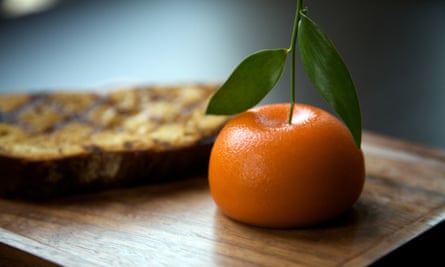
It has been going on for a few years now. In 2011, Heston Blumenthal created his “meat fruit”, a chicken-liver parfait coated in jelly and fashioned into a startling facsimile of a tangerine. This coincided with a massive spike in Twitter usage and, lo, the delicately dimpled orange was everywhere. In the US, Frankenstein creations such as the cronut were tweeted like the second coming. Earlier still, then-young gun David Chang’s nascent empire was fuelled by fans gibbering about his pork buns online. He played to the crowd, and suddenly everyone knew about Taiwanese-style buns. Soon diners were working as unpaid marketeers for their favourite restaurants, a paradigm fully exploited in the UK by clued-up new restaurateurs such as Russell Norman of Polpo and Scott Collins of MeatLiquor.
Now everyone’s at it. Are these chefs and restaurateurs pulling our strings? The more serious, cerebral types will deny there is any such manipulation at play. When the Chiltern Firehouse landed in London, a new star was born: chef Nuno Mendes’ crab doughnuts. Did he know that they were going to be as much of a draw as the chance of clocking Kate Moss? Not according to Mendes: “They were an experiment at [his previous restaurant] Viajante that only saw the light of day when we opened the Firehouse,” he says. “I just didn’t have the right space to serve them. Some ideas stay in your head for years before they find their way out.” I believe him, although I suspect he knows exactly what he’s doing at his new place, Taberna do Mercado, with his twist on abade de priscos, a strikingly visual pudding – yellow and scarlet from its egg yolks and port caramel, given even more of a shareability factor by the addition of pork fat.
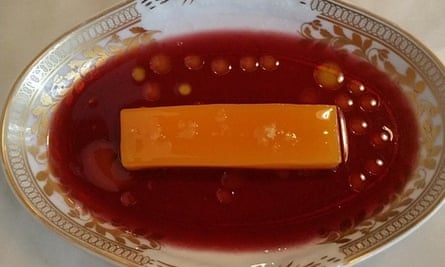
Most of the chefs and restaurateurs I speak to are coy about the idea that they would do anything so calculated. When I ask Jonathan Downey, the orchestrator of a sprawling street-food collective, if any of his team deliberately creates dishes in the hopes of online cult status, he laughs. “My God. I thought I was cynical, but you …” Most profess to be taken aback by the sudden stardom. A contender for the most-Instagrammed dish in the UK at the moment must be Shackfuyu’s kinako french toast; general manager Alina Sann says the sheer popularity of this simple dessert took them completely by surprise. “We have quite a small menu and kitchen, so we wanted something easy to make – but it has taken us way beyond what we ever expected,” she says. So why the fandom? “It looks quite cool, especially with the matcha soft-serve on the side. People started posting pictures … it started getting all the hype, and it’s an easy sell for our waiters because they know everyone will love it.”
The spectacular confit potatoes at the Quality Chop House are another internet smash (and something I’m guilty of Instagramming more than once). Chef Shaun Shearly also credits necessity for their genesis: “They were born on the back of really wanting to stay away from a conventional chip – mostly because of space in my little kitchen, and because people expect that fried carb.” What are the downsides of having such a labour-intensive “star” dish? “With potatoes being so variable in water due to their starch levels, they need constant attention. And I can never take them off the menu, despite them being a complete pain in the arse during service. We can only cook three portions at a time, and they take about four minutes to cook. Most tables order at least three portions at a time.”

So it’s all a happy accident, right? Speak to the publicists, however, and a different story emerges. When I ask Hannah Norris, the PR for a number of the capital’s hottest restaurants, if she advises chefs to deliberately devise dishes to grip the internet by the throat, she says: “Yes, I’d encourage it for sure. Content is key – and having a ‘hero’ dish to shout about is often the difference between a stonking launch and a lukewarm one. If a restaurant asks me to do their PR, one of the first questions is, ‘What’s the glory dish? What’s our Duck & Waffle?’ If there isn’t one, I often make my excuses and scurry away.”
With all the chefly coyness, it is refreshing to speak to Stevie Parle, the owner of the newly opened Craft in Greenwich, who is pragmatic about the value of the cult dish. His clay-baked duck actively encourages sharing, not only over dinner but, with his hypnotic video of the bird’s serving ritual, online too. “The duck [served in clay to be smashed at the table] was very conscious,” he says. “Most chefs have always thought about ‘signature’ dishes and generally end up hating them, but now there is an added element of them going viral too.” So they are stuck with them? Yes, says Parle: “I love the duck but it isn’t ever going to be able to come off the menu. And people get really cross if I start smashing it before they’re ready with their cameras.”
Franco Sotgiu of Solita in Manchesteralso acknowledges the internet effect. “It pains me to say, but when creating specials I’ve learned that anything with ‘big, fried, bacon or cheese’ in the title sells well. The better they look in a photo on Twitter and Facebook, the more RTs and likes they get, the better they sell.” He is rueful about the side-effects: “In Manchester, ‘dirty’ still sells well, and even though I’ve tried relentlessly to push more grill items and less calorific dishes, the stuff that looks sloppy-great in a photo can often achieve 500-plus RTs on Twitter. So it makes sense from a business point of view to lead with these.”
It is as simple as bums on seats, then. Instagram snaps are the restaurant’s equivalent of an Amsterdam-style shop window. Viewers scroll through pic after pic, the squelchier, more drooling meat juices on show the better, frequently tagged – ugh – #foodporn. Petra Barran of streetfood collective Kerb says: “Anything oozing melted cheese does really well.” Neil Rankin of the Smokehouse and Bad Egg takes it even further: “Burgers, as long as they are oozy and wet, are a sure thing. Food gets people off without the guilt of objectifying the opposite sex.”
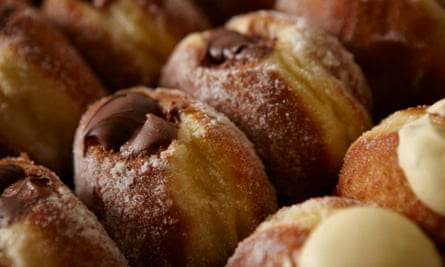
But what’s in it for the tweeters and Instagrammers? The anonymous Clerkenwell Boy, a hugely followed Instagrammer whose account has contributed to the fetishisation of what is frequently dubbed *that* burger or *those* wings, says: “I think there is something fundamentally satisfying about sharing a photo of a brilliant dish with others. I’m no psychologist, but it probably also has links to ‘social proof’ – so posting photos of *that* dish is like providing (and receiving) a universal seal of approval. I guess you could liken it to the way that tourists react when they see a major landmark in a foreign city. Just like the Eiffel Tower or Big Ben, a photo of *that* signature dish means that you’ve arrived.” What does he think it is that captures the imagination so fiercely? “People suffer from massive food envy and fear of missing out. Ordering *that* dish becomes a failsafe way to ensure we don’t make the wrong choice.”
Not only is there the serotonin rush from watching the likes mount up, but there is the chance of catching the celebs’ eye: a #followoftheday from Nigella or a regram by Jamie. (Nigella’s Instagram of Stevie Parle’s clay duck video has, at the time of writing, more than 2,300 likes.) It creates a circle of validation: the restaurants get the punters, the punters get the likes – behavioural economics. The problem, of course, is that social media is driven by the thrill of the new. Tweeters move on to the next big thing without a backward glance. Six months down the line, there’s a chorus of “we’ve all seen that bloody pithivier”, a mindset that compels chefs and restaurateurs to reach ever more attention-seeking heights, dreaming up the culinary equivalent of Kim Kardashian’s bottom to penetrate the noise. The internet’s appetite for the food rush is insatiable; and if you don’t post that snap of your Crumbs & Doilies cupcake, or doughnut from St John, it might not taste as sweet.
Eight of the best cult dishes
1. Stevie Parle’s clay-baked duck, Craft

Parle wanted a duck dish to rival the canard à la presse at Otto’s in terms of occasion and fun. Based on an ancient Celtic cooking technique, it is glazed in honey, and wrapped in cabbage leaves and hay before being roasted in a clay wrapper, then delivered on a bed of pine twigs. It is then smashed open at the table and served with broad bean and barley miso, and salted carrots. Much videoed.
2. Shaun Searley’s confit potatoes, Quality Chop House
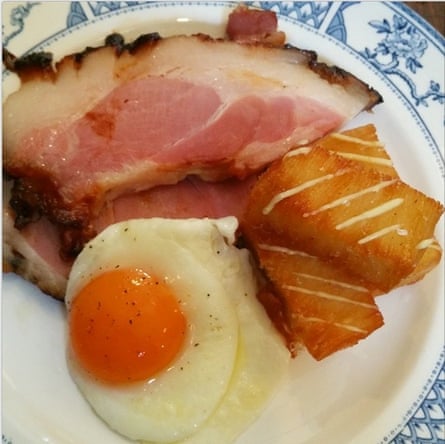
Thinly sliced potatoes, baked like pommes anna but with dripping instead of butter, then sliced, fried and drizzled with mustard vinaigrette – as delicious as they are complex. Apparently, Shearley played about with a version featuring tunworth cheese and shaved truffle, the sort of thing that may cause one to emit a small moan. The subject of many posts captioned *those* potatoes.
3. Wild muntjac biryani, Gymkhana

It is the all-action videos of this ravishing creation that add to its shareable appeal. It arrives with a flaky, domed dough lid, studded with kalonji, to be slit open at the table, releasing the bewitching aromas of spiced deer and buttery basmati rice. If only there were Smellagram too. An uncommon, upscale cult dish.
4. Blood cake, Bao
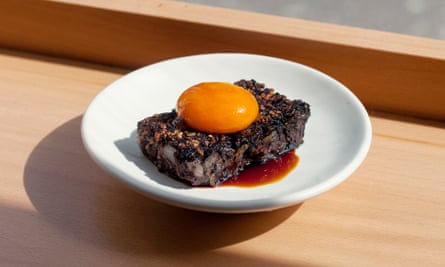
Another one Instagrammed by Nigella, thereby assuring its must-eat status. This is a traditional Taiwanese streetfood made from pig’s blood and glutinous rice. Instead of the usual peanut and coriander condiments – which feature in their classic bao – it is topped with a just-wobbling, soy-cured egg yolk. The Bao owners welcome their dishes’ “Instagrammability”, saying it provides immediate, important feedback. But they insist taste is paramount.
5. Bacon naan, Dishoom
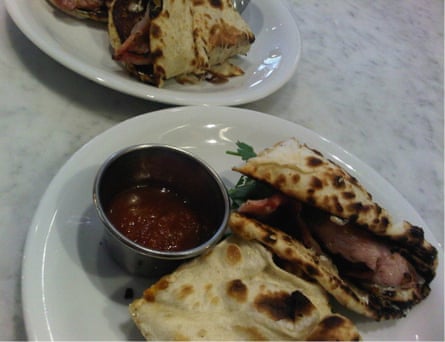
This beauty more than deserves its online fame: a pillowy, gently charred bread stuffed with crisp bacon, cream cheese and tangy chilli-tomato jam. Some add an egg. (A fork piercing yolks in slow-motion is a meme: there are currently 63,307 Instagram post for #eggporn. Sigh.)
6. Duck and waffle, Duck & Waffle
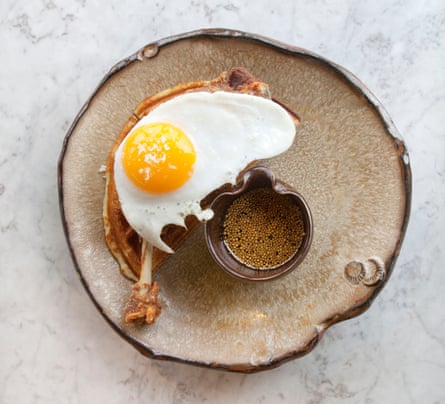
Nothing ensures hero status so much as calling your whole restaurant after one dish. If diners at this City smash aren’t tweeting the view, they’re Instagramming the crisp, fluffy waffles, flanked with confit duck and fried duck egg, the whole to be drenched with mustard maple syrup. The restaurant goes through a reported 7,000 duck legs a month.
7. The dead hippy, MeatLiquor

From the early days of Yianni Papoutsis’s MeatWagon burger van in London pub car parks to ambitious worldwide burger domination with MeatLiquor, this is a tribute to – depending on who you believe – In-N-Out Burger’s secret, off-menu “double double cheeseburger animal-style” or, more prosaically, the Big Mac. No looker – this brute is downright ugly – but wow, it does the job. One of the UK’s first cult burgers.
8. The parmo, Solita
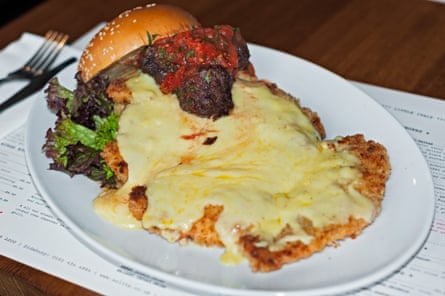
A cult north-eastern booze partner (there is even a Teesside-based @loveparmo Twitter account), this bastardised, vaguely Italianate chicken item (parmo = parmesan, although it rarely features, making this the Asbo offspring of veal parmigiana) has reached new heights at Solita. Not given to restraint, their version is fried in parmesan-laced panko breadcrumbs, topped with bechamel and melted cheese, loaded with meatballs marinara and stuffed into a brioche bun. With chips. And garlic mayo.
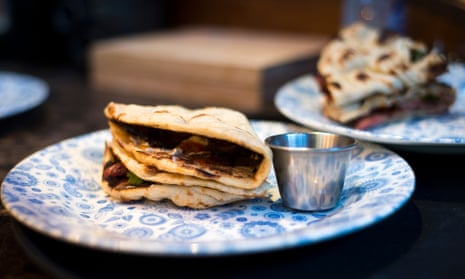
Comments (…)
Sign in or create your Guardian account to join the discussion